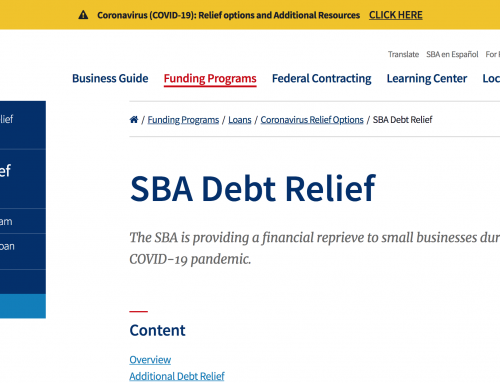Podcast: Play in new window | Download
Subscribe: Apple Podcasts | RSS
In this particular episode, you will learn
- About business types
- Liability protection
Podcast transcript:
Topics
Business Types, United States
Liability Protection and Piercing the Corporate Veil
Sole Proprietorship
Business Types, United States
The legal structure of a business is referred to as the business entity, while Generally Accepted Accounting Principles (GAAP) provides guidance on different accounting methodologies. Under GAAP, a business will be on the accrual method, reconcile cash, and maintain a general ledger regardless of the entity type. Entity choice is driven more by legal, tax, and investment concerns. Most legal benefits and operating rules are governed by the state, while taxation rules will be governed at the federal level. States and cities may also charge fees and tax. While tax is an important feature of entity choice, it may outweighed by other business needs, such as capital investment.
Liability Protection and Piercing the Corporate Veil
Different business structures offer different liability protection to owners, depending on the laws of the state. In the case of sole proprietorships and general partnerships, no liability protection is granted under the law. Limited liability partnerships, limited liability companies, and corporations provide liability protection to owners, but not in all circumstances. Regardless of the business entity choice, insurance can be used to protect owners against professional liability. Entity structure does little to protect individual owners who are negligent or break the law. For example, a self-employed surgeon cannot rely on a corporation to protect personal assets if he or she should kill a patient while performing surgery drunk. In such a scenario, the corporate structure would do little or nothing to protect the doctor’s personal assets.
Holding corporate owners personally liable for wrongful acts is referred to as piercing the corporate veil. The courts may hold perpetrators of crime personally liable regardless of the business structure. There are other actions that owners can do that may effectively erode any protections under the law. If an owner does not follow the required entity protocols by co-mingling funds (combining business and personal accounts), neglects to pay state fees, or has fraudulent accounting, the courts may ignore the structure for legal purposes. Individual investor owners, chief executive officers, and chief financial officers may be held responsible for corporate negligence.
Sole Proprietorship
The sole proprietorship is the most common entity structure in the United States. Only one person may own the business and he or she is personally liable in the case of lawsuits. To become a sole proprietor, an individual need only start operating as a business. By default, the sole proprietorship operates under the individual owner’s name. However, a business may establish a “DBA” which stands for Doing Business As in order to operate under a different name. The business may have employees compensated through payroll. The business owner does not receive a wage, but may withdraw or contribute funds at any time. Income taxes are computed at the individual level based on the profit or loss of the business. Typical sole proprietorships do not require outside investors and are small in nature. Examples include consulting services, lawn care, and small dental practices.
Advantages
Sole proprietorships are low cost and require little to no setup. Some cities require registration and property tax if the sole proprietor has significant business assets. Because it is not a separate entity for tax and legal purposes, business activity is reported on an individual tax return. Business and personal accounts are not required to be separated, but encouraged. Many owners choose to perform non-GAAP accounting at year end to prepare a cash basis profit and loss statement.
Disadvantages
Owners of sole proprietorships have unlimited personal liability for any actions committed by the owner or employees in the course of business. Should an owner or employee commit harm accidentally or intentionally, all of the owner’s assets are subject to seizure in the case of a lawsuit. Sole proprietors can obtain insurance to protect themselves to combat this disadvantage. The entity may assume loans from others, which often are personally guaranteed. No outside equity investment may be received, as only one owner is permitted. There is no continuity of life for the sole proprietorship because the sole proprietorship dies when the owner dies.
Accounting
Accounting for a sole proprietorship under GAAP requires double-entry, accrual based accounting for financial statement purposes. Relatively few sole proprietorships issue GAAP statements unless they are required to by an outside lender. Because the sole proprietorship and individual are legally one in the same, there is no stock, shareholders, or dividends. Owners may withdraw money from the business in the form of a “draw” which is a distribution of capital. Best practices dictate that draws come in the form of cash withdrawals, but can also take other forms. If an owner spends business funds for personal use, the accountant will classify the transaction as a draw, which is a reduction of equity. The sole proprietor can also take a draw by receiving company equipment, inventory, or other assets. Regardless of whether the owner takes a draw, he or she is taxed on the overall profit or loss. Cash and property used to fund the business are categorized as contributions, not revenue.
Summary
Sole proprietorships are cost effective and practical for many small businesses that do not need outside investors, since they cannot grant ownership to more than one person. Owners, however, may receive loans to finance operations. Due to the lack of continuity in ownership, loans are generally guaranteed by the business and owner. Businesses may start as sole proprietorships and then change the entity structure at a later date to facilitate investment, limit liability, transfer wealth, or satisfy other needs of the owner.
- The most common business structure
- Owners have unlimited personal liability for their individual and employee actions
- Loans are permitted, but outside investment is not
- Accounting requirements for tax purposes are generally more simple than other entities
- Tax is based on the profit or loss of the business on an individual tax return
- Business dies when the owner dies (no continuity)





Leave A Comment